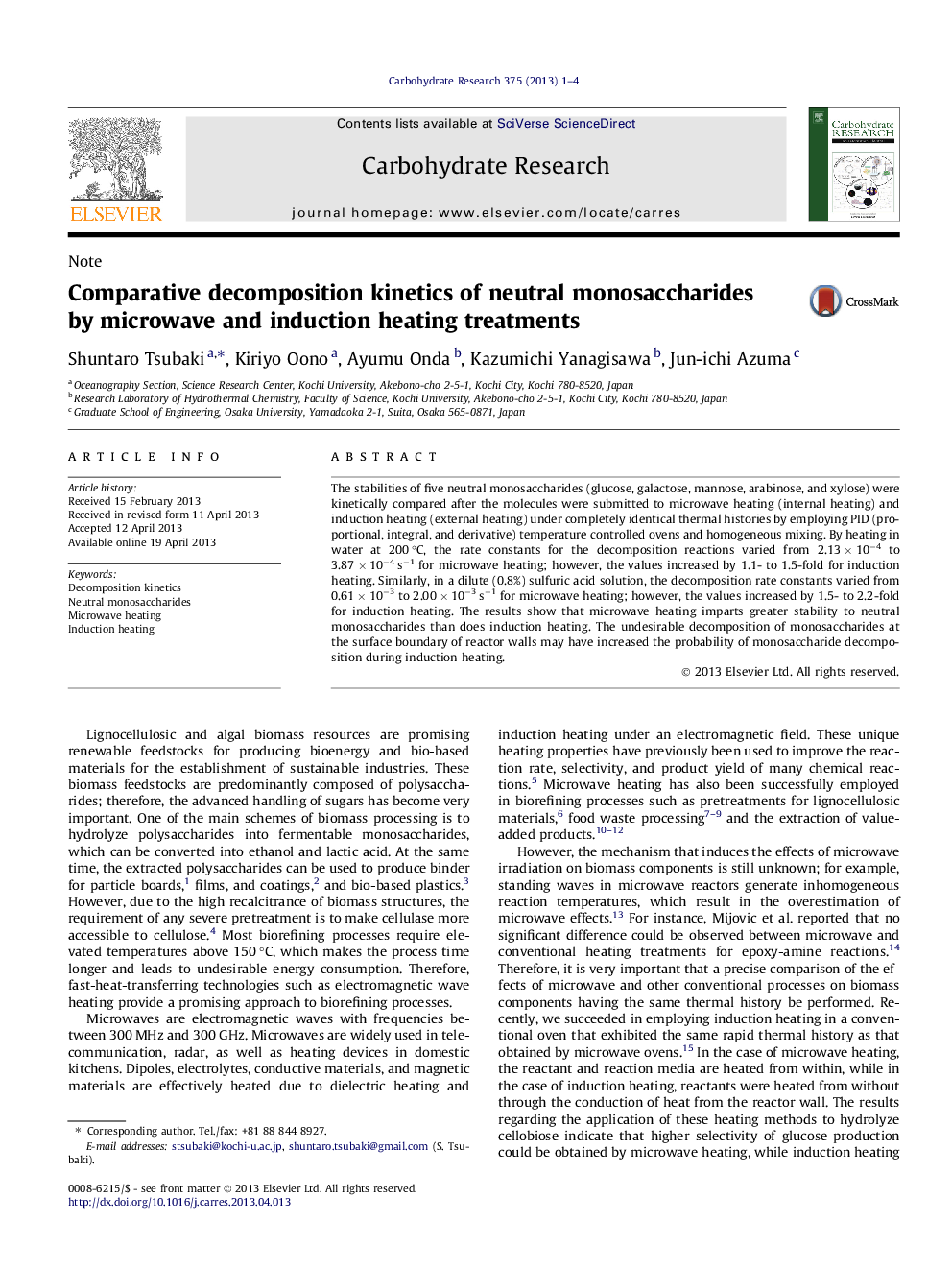| Article ID | Journal | Published Year | Pages | File Type |
|---|---|---|---|---|
| 1390281 | Carbohydrate Research | 2013 | 4 Pages |
•Microwave and induction heating were compared with respect to their abilities to stabilize monosaccharides.•Monosaccharides were more stable under microwave heating than under induction heating.•The internal heating property of microwave might reduce the decomposition of monosaccharides.
The stabilities of five neutral monosaccharides (glucose, galactose, mannose, arabinose, and xylose) were kinetically compared after the molecules were submitted to microwave heating (internal heating) and induction heating (external heating) under completely identical thermal histories by employing PID (proportional, integral, and derivative) temperature controlled ovens and homogeneous mixing. By heating in water at 200 °C, the rate constants for the decomposition reactions varied from 2.13 × 10−4 to 3.87 × 10−4 s−1 for microwave heating; however, the values increased by 1.1- to 1.5-fold for induction heating. Similarly, in a dilute (0.8%) sulfuric acid solution, the decomposition rate constants varied from 0.61 × 10−3 to 2.00 × 10−3 s−1 for microwave heating; however, the values increased by 1.5- to 2.2-fold for induction heating. The results show that microwave heating imparts greater stability to neutral monosaccharides than does induction heating. The undesirable decomposition of monosaccharides at the surface boundary of reactor walls may have increased the probability of monosaccharide decomposition during induction heating.
Graphical abstractFigure optionsDownload full-size imageDownload as PowerPoint slide
